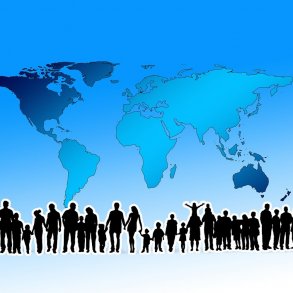By Timm Urschinger and originally published at LinkedIn.com
This article is part of a series. Part 1 is here. The original Part 2 is EE Magazine’s Part 2a below and Part 2b here.
From my first article you heard about the Teal Model already. In this second article, we will explore a bit more what “Teal” really means. You will learn more about our path to becoming a Teal Organisation and I will share some of our personal learnings from taking this path.
Evolution is a process which affects us everywhere, also in the corporate world. Some thinkers call this process “developmental theory”, which basically states that human societies (and individuals) grow in stages of increasing maturity, consciousness and complexity.
There are several names for these stages, but the major one is the colour scheme called “Spiral Dynamics”, which the philosopher and psychologist Ken Wilber used to identify them. Frédéric Laloux transferred it to the corporate world and identified the five stages of corporate consciousness:
(source: Frederic Laloux, Reinventing Organizations)
All different stages have their own breakthroughs, which marked a new level of consciousness.
Up until the Teal-layer all layers (red, amber, orange and green) are described as competing with each other and not integrating the achievements of “lower” levels. The Teal-layer is also considered the first integral (and therefore integrating) layer.
Although this model describes evolution, these organisational paradigms coexist today in our business world and even within one company different paradigms are driving primary culture in different areas of the company.
However, from my experience the number of individuals and leaders being on their individual journey to the Teal level is increasing – and therefore also the number of organisations and areas within organisations.
What is characteristic for them is that they tame their ego and become more mindful. Instead of controlling, achieving success and trying to look good they listen to their inner wisdom.
They are growing into the next stage of consciousness and with them their organisation, making the next steps towards the solution of tangible business problems such as slow decision making, frustrated employees and missing innovation, to just name a few.
But what does it take to shift towards the Teal paradigm?
The first thing is to create the right conditions to develop a Teal organisation, which refer to leadership and ownership. The chief executive’s and the owners’ world view and personal development must match with the values of the Teal paradigm, otherwise it won’t be lasting.
Secondly, the base for a Teal organisation needs to be built, which consists of three pillars: Self-Management, Wholeness and Evolutionary Purpose. The first article already mentioned these aspects, but let me explain in more detail:
1. Self-Management
Do not get this wrong: not everyone is equal, and decisions are not subject to consensus. Decision rights and power go to any individual who has the expertise, interest or willingness to oversee a situation. There are hierarchies, but instead of being fixed they appear fluidly and naturally.
To make this work, individuals might need support with some of the following items:
· Decision making, i.e. not try to please others, not going for democracy or even consensus
· Conflict management, i.e. not just escalating conflicts to their boss
· Communication skills, i.e. how to run meetings and make good decisions as well as how to coach each other and provide perspective without agreeing with each other
A powerful internal network allows people to contact each other when they need specific information or advice.
What many individuals will feel is that this is not an easy space for everyone to operate in. It takes a lot of accountability to take a decision or to later on admit it was the wrong path.
This level of accountability and the difficulty to handle it certainly is are a challenge. This development journey for everyone in the company (and the company itself) are not considered by many companies wanting to transform.
Naturally, focus is put on processes and rules of the self-managing organisation, whilst very little attention is paid to the (for me) more important part: how to support the people in their transition.
We will talk about safe spaces and wholeness in a bit, but there is much more to do to prevent people from feeling overwhelmed or soon burned out.
As a leader of the organisation you will also need to accept that not everyone has the capacity or willingness to embark on this journey – which can be tough for the organisation, but you will want to support your people in the best way here and this might also be to support them in finding another purpose.
Please also comment on this article and share your thoughts – even if you think it is completely naïve, crazy or whatever. I am looking forward to having a fruitful discussion.
Part 2b of this article is here.
Republished with permission.
Featured Image and some paragraph spacing added by Enlivening Edge Magazine.




